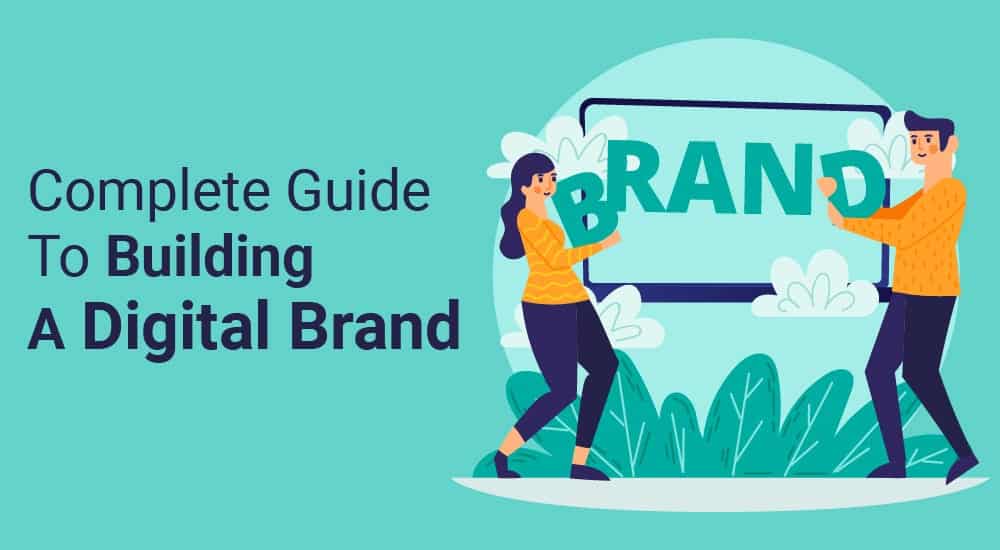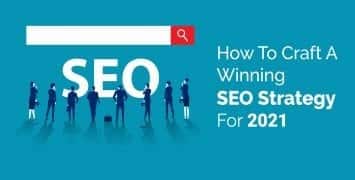Table of Contents
Introduction

You’ve heard of the Bronze Age, of the Middle Ages, and likely, the Nuclear Age. The age that we are in now is known as the Information Age and has been since the early 1970s. However, it is also true that this particular era can be known as the Digital Age.
Everywhere we go, everything we do, we are bombarded with digital, digital, digital. The Digital Age pervades all aspects of our life, to the point where brands can be built solely online.
In fact, if you are a business owner or trying to set up a brand and you don’t have a digital presence, the odds will not be in your favor in terms of success!
Of course, traditional business models and bricks-and-mortar stores and companies (analog models, if you will) still see success.
However, in order for a business to succeed it needs to be diverse, taking into account the fast changing lifestyle of today and acknowledging that in order for growth to happen, they need to expand its horizons to the digital world.
Building a digital brand is more accessible now than ever before, and many businesses operate solely online, without the need for a physical store that customers can visit. The fact that there is no physical aspect to many businesses means that their online, or digital, branding has to be spot on.
Even if you have a physical bricks-and-mortar building that can be visited by clients and customers, it is no secret that much of a brand’s customers are directed via digital methods.
In fact, some statistics have made the suggestion that 93% of consumers used the internet to find a local business in the last year, with 34% searching every day.
With the majority of people checking up your businesses online before they even venture out to your physical store, it is clearly important that your online and digital presence is of the best quality.
This article will be looking at what is involved in the building of a digital brand, giving you a complete guide on how to do it for yourself. The guide will explore all the different aspects of building a brand, and looking at ways you can make it as successful as possible.
What is a Digital Brand?

A digital brand is a way you present and build your brand online, whether that be through social media posts, email, your website, an app, videos, and much more.
It is a way of showcasing your brand to a wider audience, with the hope of gaining more custom, creating connections, and establishing relationships (whether that be with other brands, potential clients, or partnerships).
This latter point about establishing relationships is key when it comes to building a brand, be it digital or otherwise. Building a brand means making real connections with people.
It is less about attracting hundreds of new customers who may only buy one thing or interact once, and more about gaining a consistent, loyal following.
The focus is on engaging with customers and followers through creating content, showcasing your personality, and making personal connections with people. This is particularly important if you are trying to grow your brand, because, in order to grow in terms of revenue, you must first create this reliable base.
At this point, you may well be wondering, but what is a brand? Allow us to explain. A brand is your identity.
Whether you are a business that supplies a service or a yoga teacher looking to expand your client base, whether you are a creative, making crafts and selling them or creating delicious baked goods, or even if you are a freelance writer or harpist looking to grow your business, having a recognizable brand identity is going to be key to success.
It is a creative process, allowing you to tell customers who you are, what you do, your core beliefs, and ultimately, why they should hire you or buy your products.
So, before you even dream about building a digital brand, you first need to identify what your brand is. To do this, think about those components we discussed above:
- Ask yourself who you are
- Think about what you do
- Work out what makes your brand unique
- What are your core beliefs?
- Think about what the ideal customer of your brand is and who you want to target with your brand. This will help you to identify your audience.
Pull everything together and figure out what your identity as a brand is. Your brand identity should be uniquely yours. You should feel passionate about it, ensuring it is genuine and related to what you do.
When you have this down, you can begin to think about how you can transfer this identity to your digital world, building up that identity online.
This online identity can be conveyed however you want it to be. You can build a website with your brand logos and colors incorporated into it. You could build a social media presence, making accounts for your brand on popular apps such as Facebook, Instagram, Twitter, and TikTok.
You could start a Youtube channel or podcast as a way of talking to potential customers. The possibilities are truly endless when it comes to your digital presence, and provided you have your brand identity down, there is no reason why you cannot build a successful digital brand.
Digital Branding vs Digital Marketing

You might be thinking about how similar digital branding sounds to digital marketing. You may even possibly have thought they were the same thing. There are certainly many similarities between them, and on the surface, they certainly seem similar.
However, there are some key elements that set the two apart. The first thing to consider is what branding is. As we know, branding is all about creating worthwhile connections with people, regardless of whether they are buying your product or service.
You will be engaging with a community of potential customers, consistently churning out good quality content to keep your audience enthralled and interested in the brand. As we know, it is less about selling your product and more about building an audience and establishing a relationship.
Digital marketing, on the other hand, focuses more on generating sales. This is where digital adverts come in. digital marketing uses digital platforms such as social media, email, your company website, and articles (for example sponsored posts) as a way to gain sales from people.
Often there will be targeted ad campaigns run as a way of digitally marketing a brand. The focus is on finding new customers and generating a sale through that.
Digital marketing does not establish connections or engage with customers. Instead, it talks at customers, telling them about the product or service in question rather than the identity of the brand.
The Key Ingredients For A Successful Digital Brand

Now that you know exactly what a digital brand is, and how it differs from digital marketing, we can move into our guide. This guide will tell you exactly what you need to do in order to build a digital brand.
We have organized it into nine of the most important aspects that should be considered in order for you to have as successful a digital brand as possible.
Choosing A Brand Name
The first thing people get to know about your brand is your brand name. Think of some of the most recognizable brand names that you know – Apple, Google, Disney, Dior – the list is endless. All of these names are different.
Apple is a name that has been taken away from its original context and applied to something else.
The first time you ever heard that name you likely thought that the company sold apples, right/ Or perhaps had no idea that it even was a company and that people were just really interested in buying apples all of a sudden.

It is memorable, because it is so out of context, and it creates a buzz among people. Think of how differently things might have turned out if they had simply called themselves ‘The Computer Company’, or ‘Jobs and Wozniak’.
Google is a completely made-up word and seems to bear no resemblance to the product itself. However, because of its sheer uniqueness, when you hear that name now you think of just one thing.
Making up a name, provided it is easy to pronounce and not just a jumble of incomprehensible letters, can prove very successful as the choice is both memorable and totally unique. Imagine if Google was instead named after its founders. Would the name be as memorable?
Disney, a recognizable household name. This simple brand name is named after the creator, Walt Disney. Using the surname (or first name) of the creator is often a popular choice for brands, and many successful brands have done this, such as Dior.
that being said, if these brands were not as hugely successful as they are, they would both be just another surname amongst hundreds or even thousands of brands named after their creators. As successful as these name brands can be, they also run the risk of being forgettable.
The point we are making here is that names can make or break a company before they have even begun. Don’t fall into the trap of thinking that your name has to tell your customers what you do.
Just because you make jewelry does not mean you have to have that in your brand name. Choose something memorable, out-of-context, or even totally made up. Provided it is easy to read and pronounce, you will not go far wrong.
High Quality Logo Design

Your logo is going to be the most recognizable part of your brand, perhaps even more so than the name. As an example, think of McDonald’s.
Children around the world recognize that yellow arch from miles away before they even learn how to spell McDonalds!
It is simplistic and conveys the message without needing so much as a second color to make it stand out. As another example, think of Starbucks.
We bet the first thing that comes to your mind is that recognizable green logo.
This is even more interesting when remembering how Starbucks changed their logo in 2011 to remove the words, leaving just the green mermaid image.
Again, say the word Disney to anyone, chances are they immediately think of mouse ears and a castle. These are examples of great, high quality logo designs that are instantly recognizable.
There are a few things you should keep in mind when you are designing your brand logo. To help you ensure that your logo is as high quality as possible, we have organized some of the most important factors that you need to consider into a table, along with an explanation of each of them.
| What to consider for your logo | Why it’s important |
|---|---|
| Font | You want your font to be legible, recognizable, and related to your brand. What we mean by this is that if you are a finance agency, then it’s not going to make sense to have a fancy cursive font as this does not relate to the brand’s message. Instead, you will likely want a simple, straight font that is clear and legible. Remember that your logo is going to be used across all aspects of your brand, from any official documents and letters to your website, and on social media posts. Something as simple as font style may not seem like a huge deal, but when you consider the number of people who will be reading your brand name, you will want to ensure it is as clear as possible. |
| Colors | The colors you choose should match your brand identity, appeal to your audience, and should stand out. Do not be fooled into thinking that you need lots of different bright colors. Think back to the examples we gave about McDonald’s and Starbucks. They use just one color in their logo and it is still extremely effective. Remember the importance of color theory, too. Some colors can be interpreted as being sophisticated, whereas others are more down to earth. A little Blue Box, for example, is synonymous with sophistication, class, and the brand Tiffany’s. Your colors should remain the same across all branding images, from your logo to your website design, and even on your social media posts, so ensure that the logo is something that translates well across all of these places. |
| Graphic quality | As we mentioned in the previous two points, your logo is going to be seen on a huge variety of different mediums. This means that you will need to ensure that the logo looks good in lots of different sizes. Whether you are designing your own logo, or you have hired a professional, ensure you see examples of it at a variety of different sizes to ensure that it still looks good, that any fonts are still legible, and that it still makes an impact whether five times bigger or smaller. |
| Unique | Sure, you may feel inspired by the cool logos of other successful brands, but this does not mean you should try to replicate them. Focus on creating a logo that is unique to you and your brand. You might feel this is difficult, especially if the product or service you offer is similar to other brands, but remember what makes you unique and incorporate that into the logo. |
| Timeless | Don’t be taken in by trends when it comes to your logo. It can be tempting to incorporate designs and graphics that match current trends to gain more popularity right now, but what happens in a few months’ time when trends change again? It is far better to stick to a design that is simple and timeless as it will be suitable for years to come. |
Fully Optimized Website
Having a fully optimized website is one of the most important things you can do for your brand when you are trying to build up your digital presence.
Your website will be the first thing customers see when they do a search engine hunt for your business.
This means it needs to be working perfectly, and conveying everything you want it to, providing customers with everything they will need to know. First impressions count, after all.
Gone are the days where a customer will look up your business in the Yellow Pages to locate a phone number and address.

Now, Google, and other search engines, act as these directories.
All aspects of your website need to be high quality, in line with the rest of your brand, and easy to navigate. Use the same colors on your website that feature in your logo, ensuring it corresponds with any other branding on your social media platforms and any apps.
There are some simple things to remember when it comes to building your website. We have organized them into bullet points for you with a short explanation of how to achieve each of them.
- Ensure it is free of errors – error messages look unprofessional and give the impression that you are an amateur. Ensure any errors are dealt with swiftly and check daily to ensure your website is running as it should be.
- Deal with any broken links as soon as you see them – Like errors, broken links are unprofessional and can lead to your potential customer just abandoning your webpage altogether and looking elsewhere.
- Keep the colors and logos in line with your brand – as we already mentioned, it is super important that you ensure that your website is easily identifiable as yours (or at least your brands’) ensure your logo is visible on all pages and that the colors you use match with your logo and other correspondence.
- Use simple menus for navigation either at the top of the homepage or in a burger menu – customers will appreciate being able to easily find everything they need to. Ensure your navigation menu is simple, laid out along the top of the homepage or in a burger menu that is visible in the corner of the page. This is where you will have the links to lead them on to contact pages, product pages, any articles you feature on your site, and anything else you want to include on your website.
- Simple layout – This links in with some of the other important factors to consider. When ensuring your navigation is simple and that your design matches your branding, you should also be mindful that you want the whole website to be simple to navigate. Keep the design clean and simple, ensuring the background colors work well with the color of the font so that they can clearly be read.
- Crawlable links – this means that both customers and search engine spiders and bots (these sound creepy, but don’t worry, they are fine) can navigate everything on your page with no issues and will help you out in the long run when it comes to SEO (more on this later!).
- Indexable – As well as having crawlable links, you also need to make sure that your website is indexable. By this, we mean that you need to make sure that a search engine can easily analyze your site ready to be indexed. To do this you should ensure that your site is well structured, there are no broken links, and it is crawlable.
See how all of these points lead into the other? You can’t just do a few of the points we have listed above. Ensure that the whole site follows every aspect of our guidelines in order to get the most out of it.
If you get stuck, we always recommend hiring a professional to help get your website up to scratch, letting them know exactly what you want it to include.
Clear Brand Messaging

Clear brand messaging is something we have already delved into a little in the other points we have explored so far.
However, it is so vital that we wanted to dedicate a whole section to it.
Brand messaging is an amalgamation of your whole brand neatly packaged into a snippet.
This can be a tagline or a slogan.
It is designed to give your potential customers and connections an insight into your business, your services, and your products.
In order to get a clear brand message it is important that you have figured out your identity, and that you know exactly who you are, what you do, and the core beliefs of your brand.
You should also know all about your intended audience and customer base as they will be the people seeing this brand messaging and will be most likely to engage with it.
Your brand messaging should be inspiring, influential, and uniquely yours. It needs to be straight to the point, telling the customer or connection in as few words as possible, what you are all about.
Your brand messaging is your identity. To gain a better understanding of this, it is helpful to see examples from other successful brands.
| Brand | Brand Messaging and Impact |
|---|---|
| Nike | Just Do It – This is instantly recognizable as Nike’s slogan or tagline. In just three words, Nike conveys their message of getting things done. They make sportswear and sneakers, and ‘just do it’ conjures up images of just getting your sneakers on and heading out for that run or getting onto that elliptical and just doing it. It inspires customers, which is one of the values that Nike holds dear. |
| Walmart | Save Money. Live Better. – This simple and effective tagline from Walmart gets across their simple message clearly and succinctly. Their brand values include having affordable items to help families to live more comfortably. The tagline explains this in just four words. This is conveying their core values. |
| Disney | The Happiest Place on Earth – Disney uses this tagline in relation to their brand, and especially their theme parks. One of Disney’s core values is bringing joy and happiness to their customers. This short, five word sentence tells the customer exactly what to expect from Disney, and makes clear that they are the happiest place on earth, not allowing any other brand to have that same title. |
As you can see from these three examples, their taglines and slogans convey their brand messaging with ease, letting their customers know exactly what to expect from them.
Your brand message should focus on providing solutions to your customer, focusing on the positives rather than the negatives. Research other similar brands to yours and see how they conduct their brand messaging. Use this as inspiration to gauge an idea of what works, but ensure that your message is unique.
Search Engine Optimization
Search Engine Optimization (or SEO for short) is undeniably important when you are building a digital brand. It is what will make you visible to new customers.
To ensure you nail this one, you should consider SEO when you are conducting all parts of your online branding. It is most important for your website. Your website needs to be set up with SEO in mind.
What SEO does is increase the visibility of your website in organic search results on major search engines. For example, if your brand sells handmade candles, you would want to be one of the first results when someone was to search for ‘best handmade candles’ on Google.

In order to ensure that your website is properly set up for SEO, it is a good idea to get in touch with professionals who will be able to help you with this.
Another option is to use online tools, like those set out by Google’s Webmaster guidelines. This will help you to tailor your website to suit what Google (one of the top ranking search engines) look for.
In general, you should ensure your website is simple, easy to navigate, has no error messages or broken links, and is in working order. Create content on your website that is engaging by researching keywords related to your brand or niche.
Ensure these keywords are clearly used in your articles and content to boost your chances of search engine optimization. You should also ensure there are meta tags on your site to allow search engines to understand your website and its contents far better.
Effective Use of Social Media

Social media is one of the most influential tools we have in our hands. The power of social media is awe-inspiring and sometimes scary.
When building a digital brand though, social media is your best friend. Make sure your brand is represented on all of the top social media platforms.
As we mentioned in the introduction, you need to get your brand set up on all the household names – Facebook, Instagram, Twitter, and TikTok.
You should also ensure that you keep up to speed on all of the new and popular social media platforms.
These platforms seem to gain in popularity almost overnight, and so you need to ensure you have your finger on the pulse, ready to create a new account at the drop of a hat.
When it comes to making effective use of social media, the key is in creating consistent, good-quality content, and engaging with the audience you have on social media.
This means replying to comments, commenting on the posts of other people, interacting through videos, ‘going live’ on social media to chat with followers, and just generally having an active presence.
You can plan posts in advance using tools like Hootsuite, Buffer, and Tweetdeck. Facebook Business also has its own tool that you can use to schedule posts, with an analytical tool which you can use to see how many people view your posts and at what times.
Analyzing your posts in this way is a fantastic way of making sure that you get the maximum reach and interaction possible. To enable this all you need to do is make a business account on Facebook or Instagram especially for your brand.
As well as this, it may also be worth considering setting up a Shopify account if you are selling a product and want to do so on social media platforms.
A good way of tackling social media for your brand is to come up with a social media plan, as laid out by Ennis-O’Connor. We have broken down some of the most common goals in successful social media plans:
- Increasing brand awareness
- Run campaigns to raise awareness
- Direct traffic to your site
- Generate and increase sales
- Create good quality content
These goals are achievable and measurable, ensuring that you will be more likely to meet them. They will all help to boost your social media presence, in turn helping you to build a successful digital brand.
Content Marketing
Founder of Microsoft, Bill Gates, once wrote “Content is king” in a 1996 essay. Love it or hate it, this quotation has never been more true as it is today.
Content marketing simply refers to the act of sharing relatable, relevant, and good quality content such as articles, blog posts, videos, and social media posts.
These pieces of content will not be blatantly advertising your company or product but will be instead sharing related information that will inspire customers to view your site and to generate sales.

Content marketing is so vital because it makes people engage. The reason for this is because the content doesn’t talk at you. It makes the point less about the brand or product, and more about the reader.
It attracts people instead of interrupting them, encouraging everyone to get involved. It is theorized that customers would prefer to learn about a brand through blog posts, articles, and social media posts than through advertisements. It is far more personal and accessible.
When it comes to content marketing, there are some key things to bear in mind. You need to make sure you keep it relevant to your brand.
By this we mean, if you are a company that sells houseplants, you probably shouldn’t create content that talks about sport or cooking. Keep it on-brand. You should make use of keyword research to ensure the content you create will be seen widely.
Keep track of previous pieces of content that have done well and model future ones on this. You should also keep in mind how important your audience is. By this, we mean that you should not be afraid to reach out and ask them what sort of content they want to see.
Online Advertising

Advertising is not just for television commercials anymore.
It pervades every aspect of our online experience.
It is rare to visit a website these days without an advert popping up.
Learn how to utilize online advertising for your digital brand and you will be very impressed with how successful it can be, provided it is done correctly.
Many smaller businesses may be cowering in the corner right now, thinking that it is only bigger brands that have the budget for advertising campaigns.
However, this is simply not the case anymore. You can leverage online advertising of any size.
There are many different ways you can advertise online, and we have a table to explain the methods.
| Types of online advertising | Explanation |
|---|---|
| Display banner ads | Display banner ads are typically seen on banners at the top of web pages |
| Search engine ads | These ads reside at the top of a list of search engine results. For example, if you search ‘best chocolate bar’, there will likely be some chocolate bars advertised at the very beginning of your results. |
| Retargeted ads | These clever little ads are sent to customers who may have previously searched for a product. Using the example of a chocolate bar again – say you searched for a chocolate bar, found a great online store that sold them, added it to your basket, and then closed the webpage, you are likely to see an advertisement for that same chocolate bar or at least for that brand later on when you enter another webpage for whatever reason. |
| Social media ads | Many social media platforms allow you to sponsor content which will then be shown in feeds via a pay-to-play system. You could also sponsor people on social media to post about your product or services using #AD or #Sponsored at the beginning of their post (more on this later!). |
| Feed ads | Another social media method, feed ads blend in naturally with other non-advertisement posts and appear on the ‘suggested for you’ pages of potential customers. |
All of these online advertising methods are a great way of marketing your products, services, and ultimately your brand.
Utilizing Influencer Marketing
This is becoming more and more popular as a way of digital brand building.
Simply put, brands strike a partnership with an influencer – think famous Youtube stars, people with big social media followings, the Kardashians, you get our drift – and pay them or offer a commission to promote their product, service, or brand overall.
Influencers chosen must be trusted in the community, have an engaged following, and must be truthful.

This means reviews should be honest, it should be made clear that the post, article, video, or podcast is an advertisement or sponsored post, and nothing should be hidden.
In fact, it is now law that influencers must disclose when they are posting something that is an #ad or #sponsor.
Our top tips for working with influencers are as follows:
- Ensure they are relevant to your brand. By this we mean, if you are an indie gaming company, there is no point in reaching out to bloggers that post solely about beauty. This will seem disingenuous and it is likely that they would not have an audience that is in line with your target audience.
- Transparency is key. Approach them with all of the information you need. Tell them your budget upfront and let them know what is expected from them should they choose to form a partnership. You should also make it abundantly clear that they need to disclose that any posts or articles they make regarding your brand are an advertisement or sponsored post, detailing that they are getting paid or receiving commission for it.
- Numbers are important but not the be-all-and-end-all. Sure, it is great to look for influencers that have a book following as it opens up the door to even more potential customers. However, it will be far more worth your while to work with micro influencers who have smaller followings but are trusted in the community, as more people are likely to listen to them.
Striking up successful partnerships with the right influencers can prove very successful when building a digital brand.
Summary

We bet you didn’t think building a digital brand could be this accessible to you, right? Follow our complete guide above and wow everyone you know when you become a successful brand owner in the near future. What are you waiting for? You’ve got the tools, now go forth and build!




